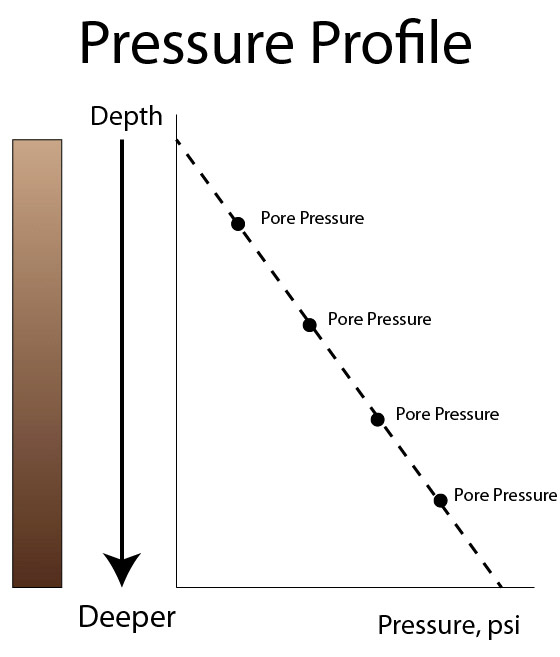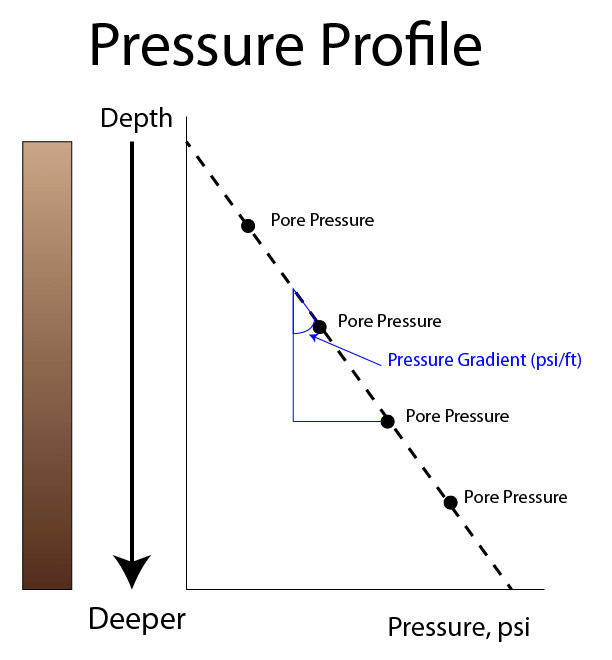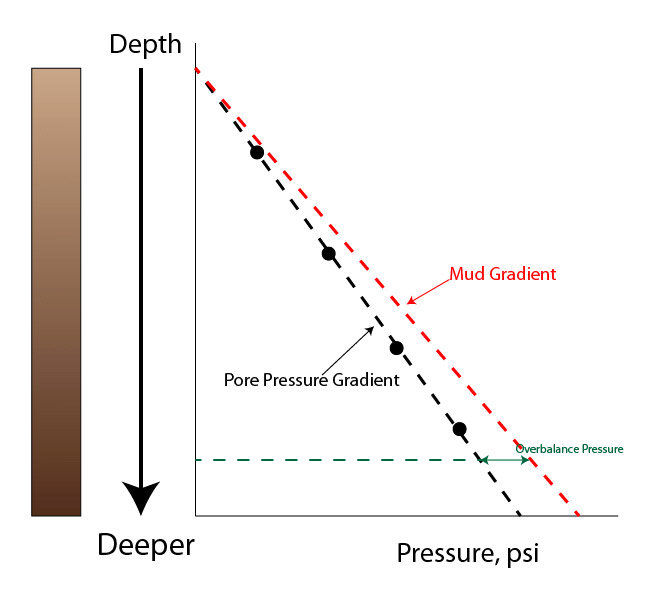Formation pressure is important information for well planning and operation because it impacts on several things as well control, casing design, drilling fluid program, pore pressure prediction, etc. We will discuss about formation pressure in a basic term for drilling personnel.
During an era of sedimentation and erosion, little grains of sediment are constantly building above each other, usually in an environment of full irrigation. As the sediment thickness of the base layer increases, the sediment grains are packed strongly near to each other, and some water is excluded from the small pore spaces. Though, if the pore spaces through the deposit sediments are connected to the top pressure surface, the fluid at any depth in the sediment will be same as that which would be found in a simple column of fluid.

The pressure of fluid in sediment pores would only be reliant on the fluid density in pore space and depth of the pressure measurement (equal to the elevation of the column of liquid). It will also be independent of size of the pore or throat geometry. The pressure of the fluid in the pore space (the pore pressure) can be measured and plotted against depth as shown in Figure 1.

Figure 1 – Pressure Vs Depth Plot
The pressure in the formations to be drilled is often expressed in terms of a pressure gradient as psi/ft. This gradient is consequential from a line passing all through an exacting arrangement of pore pressure and a datum point at surface and is namely the pore pressure gradient (Figure 2).

Figure 2 – Pressure Gradient
When pore throats interconnected through sediment, the fluid pressure at any depth in sediment will be identical of that would be established in a simple column of fluid and consequently the pore pressure gradient is a straight line as illustrated in Figure 1. The tangent of the line is pressure gradient shown in Figure 2.
Representing pore pressure in pressure gradient unit is quite convenient for calculation and easy to present to everybody. If drilling mud density is presented in the same pressure gradient unit, at each depth of interest, you can compare pressure in order to ensure that the well is still in over balance condition. The Figure 3 is a chart showing the pore pressure gradient and mud gradient. The degree of difference between the pore pressure and the mud pressure at any particular depth is overbalance pressure at.

Figure 3 – Overbalance Based on Pressure Plot
Within the pore space of sedimentary formations contain most of the fluids with proportions of salt and known as brines. The dissolved salt matter can vary from 0 – (over) 200,000 ppm. Likewise, pore pressure gradient vary from 0.433 psi/ft (fresh water) to around 0.50 psi/ft. Pore pressure in most geographical areas, the gradient is roughly 0.465 psi/ft with assumption of 80,000 ppm salt concentration. This figure is defined as the normal pressure gradient.
Any pressure formation deviates from the normal pressure gradient is named ‘Abnormal pressures’. The abnormal pressure affects both engineering and operation of drilling. There are several reasons why the abnormal pressure zones are occurred and we will discuss it later on.
Reference books:  Well Control Books
Well Control Books







